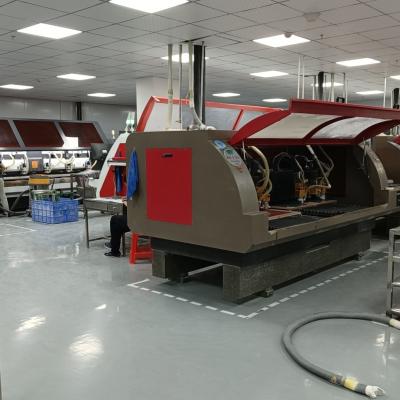With AOI, Why Do We Need AI?
From the perspective of application sides, the huge business opportunities brought by quality inspection-related solutions. In particular, since quality testing is an afterthought, it has the least risk and the highest probability of success for those who want to introduce smart manufacturing, and thus has become a stepping stone to smart manufacturing.
Among the solutions related to quality inspection, the most popular topic in recent years is the cooperation of "AOI+AI", which seems to have become the mainstream of the development of inspection solutions in the manufacturing field. For the market, AI may be an innovative technology that has made great leaps forward in recent years. However, AOI is not obvious in the field of industrial inspection and has been developed for a long time. But since the market already has AOI, why does it need AI?
What is "AOI"?
Before that, let's first understand what is AOI.
AOI (Automated Optical Inspection), that is, automatic optical inspection, is a fast, non-contact image inspection method. It is an integrated system integrating optics, mechanics, electric control, and software, and uses "machine vision" as the standard technology to analyze the surface image of the object by capturing it, and then use computer image processing technology to determine whether the object has defects such as foreign objects or abnormalities, through automation, improve the shortcomings of traditional manual visual inspection. Also, because it is a non-contact inspection, it can also be used to inspect semi-finished products during the manufacturing process.
AOI can be said to be a very widely used inspection method in the industry, and it has many functions. For example, it can be used to check whether parts are missing or flawed, or to measure the length, width, and height of parts. The application level ranges from IC and general electronics industry, metal steel, food processing, textile leather or automobile industry. According to market research, the most commonly used industries for AOI are PCB and panel display industries, accounting for about 64% and 15% respectively.
Although AOI automation can replace manual inspection, with the increasing complexity of products and the requirements of inspection speed, traditional image processing technology and algorithms still have some shortcomings, especially in the most widely used PCB industry.
The PCB industry has high requirements for yield rate, which makes the industry often set the parameters of AOI to extremely high specifications, resulting in abnormally sensitive equipment, and then overkill and misjudgment. According to industry statistics, the misjudgment rate of AOI screening may reach 70-80%.
This makes the industry quite a headache, because under such circumstances, the manufacturer can only add additional manpower to conduct a second re-inspection to confirm whether it is a false alarm or there is a real defect. This will not only cause additional manpower and time costs, but also in some industries products are even graded according to different customers' requirements for yield rate. In some cases, some defects can be tolerated. Therefore, AOI's misjudgment may lead to a surge of defective products and increase the production cost of the industry.
Based On AI, AOI Brings More Accurate Decision-Making Ability
To detect flaws or not, the "judgment ability" of image processing technology plays a very important task. In the past, AOI testing used a logical thinking model to make judgments based on set parameters and defined rules. Therefore, users usually have to define defect samples and rules first. However, in this way, AOI equipment can only follow orders, as soon as new flaws appear or are not well defined, the device may not be able to judge.
As the detection conditions become more and more diverse, the "black and white" and numerical detection standards in the past also encountered many difficulties, a more flexible mechanism is needed to assist the machine in making judgments.
The biggest difference between AOI detection and AI identification is whether it can actively identify unknown defects. AI can imitate humans to a certain extent and apply "rules of thumb" to image recognition. Therefore, compared with rules, it can achieve self-adjustment in response to external changes, and further effectively judge unknown defects or imaging.
It can be said that on the basis of AI, through software optimization, it brings more accurate decision-making capabilities to AOI. The smart automatic detection solution that integrates machine vision and machine learning like this seems to become the mainstream of future development. At the same time, it provides AOI the huge advantages for both manufacturers and users.
 Meizhou Ruiputuo Technology Co.,Ltd
Meizhou Ruiputuo Technology Co.,Ltd 



